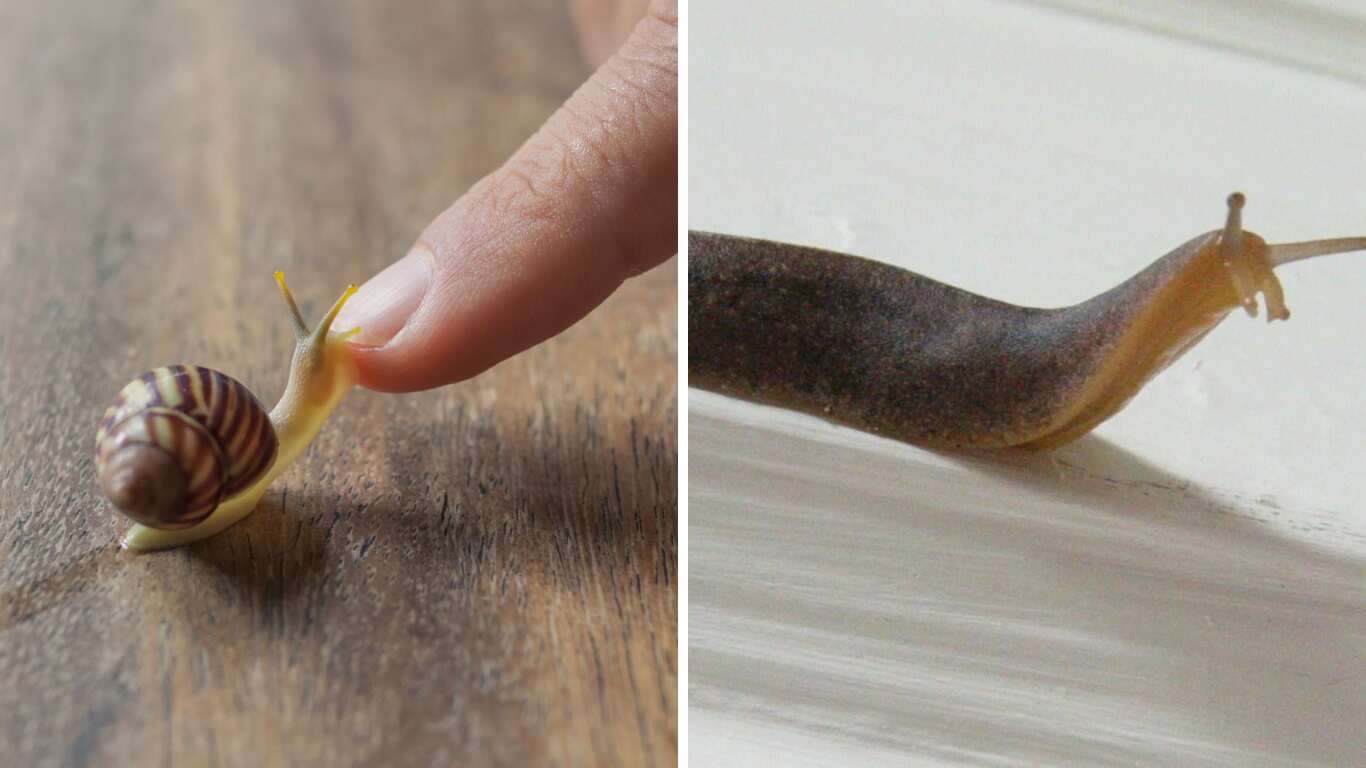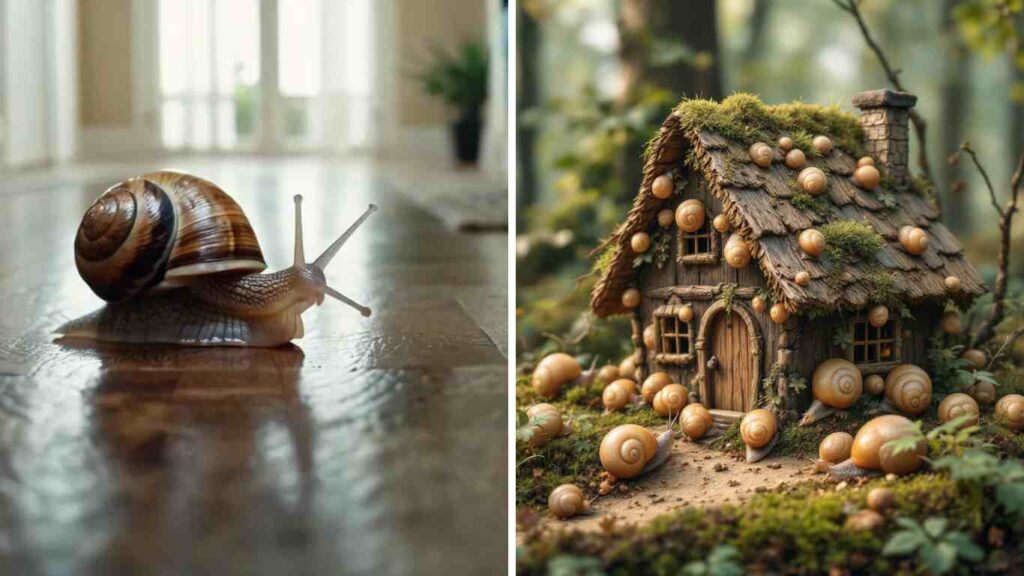Dealing with snails in your house can be a frustrating experience. These uninvited guests may seem harmless, but they can cause significant damage to your plants and create unsightly slime trails around your home. Understanding how to effectively manage and eliminate these creatures is crucial for maintaining a healthy living environment.
| Method | Description |
|---|---|
| Seal Entry Points | Use silicone sealant to close gaps and cracks. |
| Maintain Cleanliness | Regularly clean to remove food debris and plant waste. |
| Use Natural Deterrents | Apply copper tape and create barriers with abrasive materials. |
| Introduce Natural Predators | Utilize animals like chickens to control outdoor snail populations. |
| Address Moisture Issues | Improve ventilation and fix leaks to reduce humidity levels. |
So, if you’ve ever found yourself asking, “How do I get rid of snails in my house?” you’re in the right place! Let’s dive into the fascinating world of snails and learn how to reclaim your space.
Understanding Snails

Biology and Behavior
Snails are fascinating creatures that belong to the class Gastropoda. While there are many species of snails, the ones most commonly found in homes include the garden snail (Cornu aspersum) and the brown garden snail (Helix aspersa). These snails have distinct characteristics, such as a coiled shell and a soft body, which they use to glide along surfaces thanks to a layer of mucus.
Life Cycle and Breeding Habits
Snails are known for their unique reproduction methods. They are hermaphrodites, meaning they possess both male and female reproductive organs. A single snail can lay hundreds of eggs at a time, which can hatch into juvenile snails within a few weeks. This rapid reproduction can quickly escalate a minor issue into a full-blown infestation.
Why Snails Enter Homes

Understanding why snails invade our living spaces is vital for prevention. Several factors attract these creatures indoors:
- Moisture: Snails thrive in damp environments, making homes with high humidity particularly appealing.
- Food Sources: Snails are herbivores and are drawn to gardens or kitchens where they can find fresh vegetables and fruits.
- Shelter: Cracks and crevices provide safe hiding spots, allowing snails to escape harsh weather conditions.
Common Entry Points for Snails
Snails can easily enter homes through various entry points such as:
- Gaps under doors
- Cracks in walls
- Open windows
- Vents and drains
By understanding these factors, you can better equip yourself to prevent snails from making themselves at home.
Identifying a Snail Infestation
Signs of Infestation
Recognizing a snail infestation early can save you time and effort in managing the problem. Here are some common visual indicators:
- Slime Trails: Snails secrete a slime trail as they move, which can often be seen on surfaces they traverse.
- Damaged Plants: If you notice irregular holes in leaves or missing plants, snails could be the culprits.
- Visible Snails: The most obvious sign is spotting snails themselves, especially during the evening when they are most active.
How to Conduct a Home Inspection for Snails
To determine if you have a snail problem, conduct a thorough inspection of your home, focusing on damp areas, gardens, and kitchens. Look for the signs mentioned above and check for any snails hiding in dark corners or under pots. Regular inspections will help you catch infestations early.
Prevention Strategies
Sealing Entry Points
Importance of Sealing Gaps and Cracks
One of the most effective preventative measures is to seal any entry points. Snails can squeeze through surprisingly small gaps, so it’s crucial to be thorough.
Recommended Materials and Methods for Sealing
You can use materials such as:
- Caulk for small cracks
- Weather stripping for doors and windows
- Expanding foam to fill larger gaps
Environmental Modifications
Reducing Moisture Levels in the Home
Since snails are attracted to damp environments, reducing moisture is key. Here are some tips:
- Fix Leaks: Repair any leaking pipes or faucets.
- Use Dehumidifiers: In particularly humid areas, consider using dehumidifiers to reduce moisture.
- Ventilation: Ensure proper ventilation in basements and bathrooms.
Keeping Gardens Tidy
Maintaining a tidy garden can significantly reduce snail attraction. Here are some steps to consider:
- Remove Debris: Clear away leaves, grass clippings, and other debris where snails can hide.
- Limit Mulching: While mulch can be beneficial, excessive layers can create ideal conditions for snails.
Using Natural Deterrents
Overview of Natural Repellents
There are several natural substances that act as effective repellents. Some popular options include:
- Citrus: The scent of citrus can deter snails.
- Garlic: Snails dislike the smell of garlic, making it a useful deterrent.
DIY Recipes for Effective Sprays
Creating your own natural deterrent is easy. Here’s a simple recipe for a garlic spray:
- Ingredients: Combine 2 tablespoons of crushed garlic with 2 cups of water.
- Preparation: Let the mixture sit overnight.
- Application: Strain the liquid and spray it around entry points and infested areas.
Effective Removal Techniques
Hand-Picking Snails
Benefits and Methods for Manual Removal
One of the simplest methods to deal with snails is to remove them manually. This method is effective and environmentally friendly. Here’s how to do it:
- Timing: Snails are most active at night or early morning, so inspect during these times.
- Tools: Use gloves to pick them up and place them in a container.
Traps and Baits
Types of Traps That Can Be Used
There are various traps you can set up to catch snails:
- Beer Traps: Fill a shallow dish with beer, which attracts snails. They’ll crawl in and drown.
- Salt Traps: A line of salt can deter snails, but be careful as it can harm plants.
Instructions for Setting Up Effective Traps
To set up a beer trap:
- Dig a Hole: Place a shallow dish in the ground level with the soil.
- Fill with Beer: Pour beer into the dish and leave it overnight.
- Check Regularly: Dispose of snails each morning and refill as needed.
Using Barriers
Description of Effective Barriers
Creating physical barriers can be an effective way to keep snails at bay. Here are some options:
- Copper Tape: Snails dislike the sensation of copper against their bodies.
- Diatomaceous Earth: This natural powder is abrasive to snails and can deter them.
How to Create Barriers Around Vulnerable Areas
To set up a barrier using copper tape:
- Purchase Copper Tape: You can find this at gardening stores.
- Apply Around the Area: Place it around pot edges or entry points to create a barrier.
Chemical Solutions
When to Use Chemicals
Situations Where Chemical Treatments Are Appropriate
While natural methods are preferred, chemical treatments may be necessary in severe infestations. If manual removal and preventative measures fail, it may be time to consider chemicals.
Types of Chemical Treatments
Overview of Available Pesticides and Their Application Methods
There are several pesticides specifically designed for snails. Here are some examples:
| Pesticide Type | Active Ingredient | Application Method |
|---|---|---|
| Granular Baits | Metaldehyde | Spread around infested areas |
| Liquid Sprays | Iron Phosphate | Spray directly onto plants and surfaces |
Safety Precautions When Using Chemicals Indoors
Always follow the manufacturer’s instructions when using chemicals. Other key precautions include:
- Ensure proper ventilation in the area.
- Keep pets and children away from treated areas.
- Wear gloves and a mask if necessary.
Long-Term Management Strategies
Regular Maintenance
Importance of Ongoing Monitoring and Maintenance Practices
To prevent future infestations, regular maintenance is key. This includes:
- Routine Inspections: Check for signs of snails on a regular basis.
- Consistent Cleaning: Keep your home and garden clean to minimize attractions for snails.
Educating Household Members
Tips for Involving Family Members in Prevention Efforts
Involving everyone in the household can make a significant difference. Here are some tips:
- Share Knowledge: Explain the importance of keeping areas clean and monitoring for snails.
- Assign Responsibilities: Designate tasks such as garden maintenance to family members.
Also read john fetterman house
